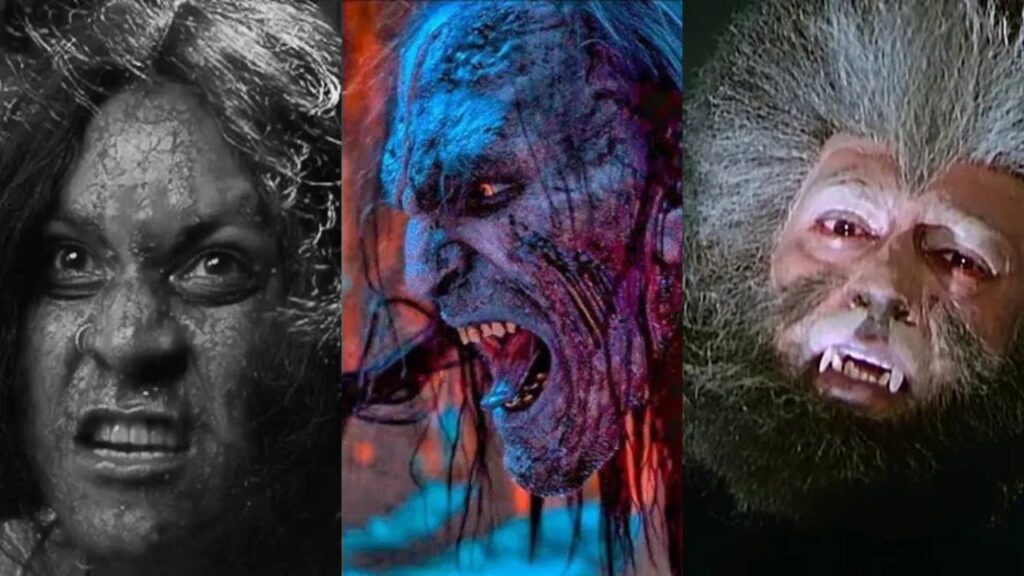India boasts a rich cinematic history, intertwined with age-old legends and myths that have echoed through the streets, told by grandmothers and mothers over generations. From the eerie tales of witches perched on ancient trees to the spooky narratives that resonate across rural landscapes, the realm of Indian folklore is steeped in supernatural lore. As filmmakers have sought to adapt these tales for the silver screen, the evolution of horror cinema has revealed significant changes in the portrayal of ghosts over the decades, adapting to advancements in technology and shifts in audience expectations.
The Transformation of Ghosts in Indian Cinema
With advancements in technology, the depiction of ghosts in horror films has transformed significantly. In earlier cinema, special effects were rudimentary—ghostly women often donned contact lenses, while male ghosts were cloaked in heavy makeup. Today, however, filmmakers utilize sophisticated VFX technology that allows for the creation of entirely new ghostly visages. These digital enhancements give the characters a lifelike quality and reality that engages modern audiences.
Moreover, earlier films relied on simple audio effects—like creaking doors or dripping water—combined with strategic camera angles to induce fear. In contrast, contemporary horror films now incorporate complex narratives and advanced VFX techniques to craft detailed backstories for their ghosts. This not only enhances the visual engagement but also deepens character development, making them relatable and intriguing for the viewers. Below, we explore the notable ghost characters that have left an indelible mark on Bollywood over the years.
1. The Ghost from ‘Do Gaj Zameen Ke Neeche’
Released on December 30, 1972, ‘Do Gaj Zameen Ke Neeche’ features a chilling narrative centered around a wealthy scientist, Rajvansh, portrayed by Surendra Kumar, and his treacherous wife, Anjali. This horror thriller presents an array of terrifying scenes, showcasing Rajvansh’s ghost returning as a zombie to avenge his death after being betrayed by his wife and her lover. The depiction of the zombie was achieved through heavy makeup, reflective of the industry standards of that era.
2. The Ghost from ‘Jaani Dushman’
The classic horror film ‘Jaani Dushman’ features Shatrughan Sinha in a dual role, one of which is the ghost. The narrative intensifies as the ghost, angered by the sight of a woman in bridal attire, kidnaps her. Sinha’s transformation into the ghost involved intricate makeup to render him monstrous, accentuated by an animalistic appearance. However, the film did not delve deeply into the ghost’s backstory, a characteristic common in earlier horror films.
3. The Ghost from ‘Kanchana’
‘Kanchana’ stands as a trademark of South Indian horror cinema. The film revolves around Raghav, a cameraman terrified of ghosts, who becomes possessed by an overwhelming spirit. Unlike many horror flicks, the filmmakers chose to use lighting and expressions to illustrate the ghostly presence, featuring a witch without heavy makeup but rather an aura of dread that captivates audiences even today.
4. The Ghost from ‘Stree 2’
Released on August 15, ‘Stree 2’ has become a box office sensation. It features a ghost named ‘Sarkata,’ who preys on women in the village of Chanderi. The filmmakers focused primarily on VFX to create an eerie presence while developing a compelling backstory. Sarkata represents a man whose disdain for modern-thinking women drives his haunting, adding a social commentary on contemporary gender issues.
5. The Ghost from ‘Kakuda’
‘Kakuda’ tells the story of a tormented spirit in the cursed village of Ratodi. This narrative intertwines elements of folklore as it introduces a unique curse involving specific actions that lead to dire consequences. The ghost in this film captures the viewers’ attention with a striking resemblance to other famed supernatural characters, while simultaneously offering a suspenseful plot that keeps the audience engaged throughout.
Conclusion
The evolution of ghosts in Bollywood films reflects broader cultural changes and advancements in storytelling techniques. As we moved from heavily made-up apparitions to sophisticated digital manifestations, the integration of meaningful backstories has allowed audiences to connect with these supernatural entities on a deeper level. Whether through the lens of horror or underlying social themes, these cinematic ghostly figures illuminate the shifting dynamics of Indian storytelling, showcasing how filmmakers are not only entertaining but also engaging with contemporary societal issues.
